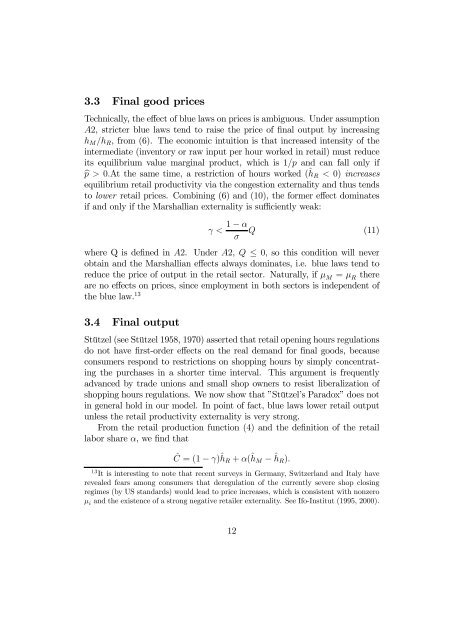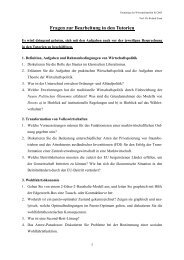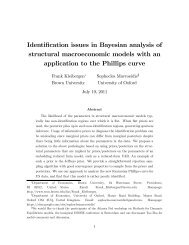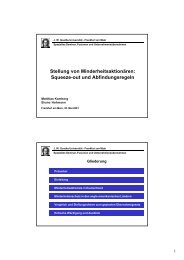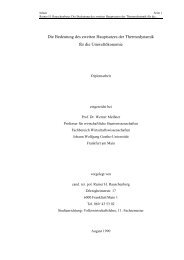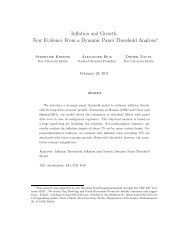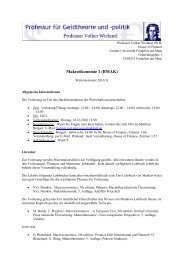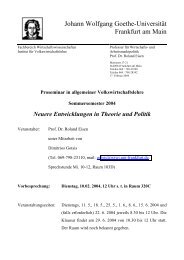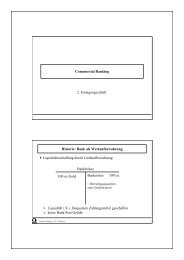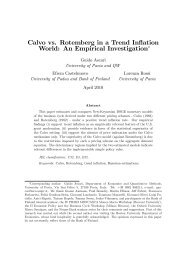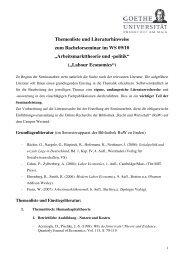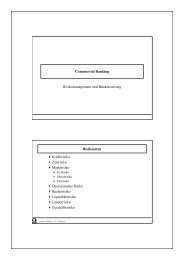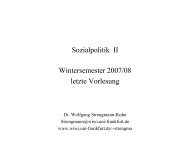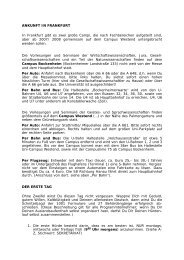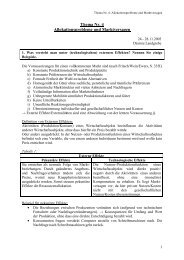Michael Burda - Sciences Po Spire
Michael Burda - Sciences Po Spire
Michael Burda - Sciences Po Spire
You also want an ePaper? Increase the reach of your titles
YUMPU automatically turns print PDFs into web optimized ePapers that Google loves.
3.3 Final good prices<br />
Technically, the effect of blue laws on prices is ambiguous. Under assumption<br />
A2, stricter blue laws tend to raise the price of final output by increasing<br />
hM/hR, from (6). The economic intuition is that increased intensity of the<br />
intermediate (inventory or raw input per hour worked in retail) must reduce<br />
its equilibrium value marginal product, which is 1/p and can fall only if<br />
bp >0.At the same time, a restriction of hours worked ( ˆ hR < 0) increases<br />
equilibrium retail productivity via the congestion externality and thus tends<br />
to lower retail prices. Combining (6) and (10), the former effect dominates<br />
if and only if the Marshallian externality is sufficiently weak:<br />
γ <<br />
1 − α<br />
Q (11)<br />
σ<br />
where Q is defined in A2. Under A2, Q ≤ 0, so this condition will never<br />
obtain and the Marshallian effects always dominates, i.e. blue laws tend to<br />
reduce the price of output in the retail sector. Naturally, if µ M = µ R there<br />
are no effects on prices, since employment in both sectors is independent of<br />
the blue law. 13<br />
3.4 Final output<br />
Stützel (see Stützel 1958, 1970) asserted that retail opening hours regulations<br />
do not have first-order effects on the real demand for final goods, because<br />
consumers respond to restrictions on shopping hours by simply concentrating<br />
the purchases in a shorter time interval. This argument is frequently<br />
advanced by trade unions and small shop owners to resist liberalization of<br />
shopping hours regulations. We now show that ”Stützel’s Paradox” does not<br />
in general hold in our model. In point of fact, blue laws lower retail output<br />
unless the retail productivity externality is very strong.<br />
From the retail production function (4) and the definition of the retail<br />
labor share α, wefind that<br />
Ĉ =(1− γ) ˆ hR + α( ˆ hM − ˆ hR).<br />
13 It is interesting to note that recent surveys in Germany, Switzerland and Italy have<br />
revealed fears among consumers that deregulation of the currently severe shop closing<br />
regimes (by US standards) would lead to price increases, which is consistent with nonzero<br />
µ i and the existence of a strong negative retailer externality. See Ifo-Institut (1995, 2000).<br />
12


